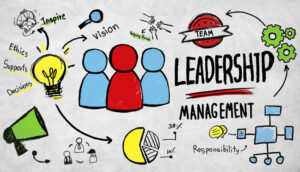A sense of achievement is important for keeping teams motivated and engaged. It helps employees feel valued for their efforts and encourages them to continue performing well.
In a contact centre, where work can often be repetitive and high-pressured, Creating this feeling is especially useful. It can lead to better morale, improved performance, and stronger team relationships. Here are six ways to do it.
6 Ways to Create a Sense of Achievement Within Your Team
1. Track the Right Things
To develop a sense of achievement within the team, the contact centre needs to be able to track and celebrate key milestones that highlight progression.
This means that the contact centre should be tracking things like:
- Gains in metrics like customer satisfaction and quality scores
- Increases in good customer feedback
- Drops in complaint volumes
- Low rates of absence and high rates of adherence
- Top performing teams of the week
Encouraging team-based competition on a range of indicators like this not only encourages good practice but also ensures that you can recognize each individual team for something.
2. Catch People Doing Good Things
Quality monitoring is another key contact centre method for highlighting great practices that can be recognized and celebrated.
In quality monitoring, you should make a habit of spotting people doing good things. Maybe you can ask each team to nominate a “call of the week”. The “best call” wins a prize for the whole team.
Gamifying the contact centre like this is such a great way to ensure that good performance is being recognized and it helps to generate a sense of achievement.

Just make sure you stick to the following rules for gamification, as pinpointed by Koby Amedume:
- Regular and Dependable Updates – You want advisors to be motivated by a goal all week long, not just on Friday afternoon when winners are announced.
- Fair Competitions – Don’t let one bad apple bring the whole team down. That is demotivating. Set a wide range of achievements to reach, so you can recognize each team for something.
- Variable Checks – Make sure everything that you recognize your team for is in their control. So, for example, don’t choose to reward advisors on handling times or occupancy rates, which mostly come down to luck.
- Focus on Leading and Lagging Indicators – Don’t focus on just your lagging indicators, target your leading indicators as well, so teams are also motivated by future outcomes.
- Create Social Awareness – Make a lot of noise over your recognition programme. Post on your internal groups and make sure teams are celebrating their wins. If not, work with them to improve your gamification strategy.
- Reward Properly – The reward needs to be worth the effort. Having team members choose the rewards, either by putting their own ideas forward or running a contact centre poll, will help with this.
To find more gamification ideas for the remote contact centre, read our article: The Best Motivational Games for Employees and Remote Workers
3. Involve the Team in Other Projects
A sense of achievement isn’t limited to meeting metrics or excelling in quality monitoring. Actively involving advisors in wider projects can be just as rewarding.
Change-management initiatives are a prime example.
All too often, contact centre managers design new processes or procedures without consulting their teams. This oversight not only misses valuable frontline insights but also reduces team buy-in, making it harder for changes to succeed.
How Does this Create a Sense of Achievement?
When you involve your team in shaping new processes early on, they feel empowered and valued. By demonstrating how the changes benefit both the organisation and their daily work, you build excitement and a sense of ownership over the outcome.
Define what success looks like ahead of the roll-out, and regularly update the team on the initiative’s progress. Celebrate milestones and successes to reinforce their contribution and build a lasting sense of achievement.
Here are three practical tips to enhance your approach to change management:
- Sharing Ideas in Focus Groups – Gather input from team members through focus groups to identify potential challenges and opportunities. This also helps address concerns from the contact centre floor early on.
- Set Clear Expectations – Walk your team through new routines or processes step-by-step during the initial weeks, so they know what is expected of them.
- Establish and Celebrate Milestones – Monitor the change and set intermediate goals to track your progress. When the team meets these goals, praise the achievement and celebrate the team’s development.
4. Motivate Advisors With Customer Outcomes
Helping advisors focus on customer outcomes not only enhances service quality but also creates a deeper sense of purpose and achievement. When team members see how their efforts positively impact customers’ lives, it becomes a source of pride and motivation.
There are a number of ways in which you can get the team invested in customer outcomes. These include:
- Creating a sense of purpose around the customer
- Increasing advisor empathy levels (these training exercises may help)
- Celebrating customer success stories
- Encouraging direct customer feedback
Another particularly effective method can be to encourage advisors to look out for customer improvement opportunities.

“Advisors can add colour commentary to what your traditional market research is telling you,” says John Aves.
“They will also bring suggestions for improvement and ideas on how to solve problems.”
So set up the right listening mechanisms within your teams, encourage them to come forward with solutions – not just problems – and act on their feedback.
When the team contribute to a positive customer service improvement, congratulate them in front of the wider contact centre. Give them a sense of achievement that will keep them coming back for more.
5. Provide Effective Feedback
How you give your team feedback is a major factor in how proud they are of their achievements.
To give effective feedback that creates a sense of achievement, make sure your feedback is:
- Direct – The focus for the feedback should be clearly stated
- Personal – Speak for yourself to maximize the authenticity of your feedback
- Specific – Make sure you are specific about the behaviour you are praising
- Thoughtful – Well-considered feedback appears more genuine than off the cut remarks
- Timely – Ensure that feedback is timely and relevant for greatest impact
The goal is to give a mixture of positive feedback around what they are doing well and constructive feedback to push them further in the right direction.
John Aves recommends the 3:1 ratio of giving three bits of positive feedback to one piece of constructive feedback. This means that you are highlighting lots of key achievements, while setting up an area for potential improvement.
When there is an improvement in this area, celebrate that to further create a sense of achievement.
On an individual level, when you highlight a topic for constructive feedback, you could also potentially pair up the advisor with a colleague who excels in this area.
If the advisor receiving the feedback then improves, you can praise both team members for their role in improving the performance and create a real sense of togetherness.
For more guidance on how to best give advisors feedback, read our article: How to Achieve Excellent Customer Service Through Coaching
6. Create a Sense of Unity in Your Team
To create a system where you can be sure that teams feel motivated by a sense of achievement, it is best to ensure they are coordinated, joined-up and supported.
If they are not, what you will likely find is that you have two different teams within the contact centre working on the same goals and not sharing key learnings with one another.
It is much better to talk to team leaders and understand their key improvement goals. Then, ask them:
- What does success look like?
- How can success be measured?
- What are your intermediate goals?
This last question is particularly important, as you look to ensure that leaders are engaging their teams by making big improvements seem possible.
Also, try to congratulate the team on reaching these stepping stones and make sure that they know that they are on the pathway to success.
At the end of this process, the manager and all the leaders can sit down and share their new-found best practices. These can be shared around the contact centre to further improve performance.
For more motivational techniques that will improve team performance, read our articles:
- 50 Staff Engagement Ideas to Motivate Your Team
- Storytelling: The Modern Way to Increase Staff Motivation
- Contact Centre Motivation – How to Reward, Empower and Inspire Advisors
Author: Charlie Mitchell
Reviewed by: Hannah Swankie
Published On: 5th Apr 2021 - Last modified: 3rd Dec 2024
Read more about - Call Centre Management, John Aves, Team Building, Team Management















